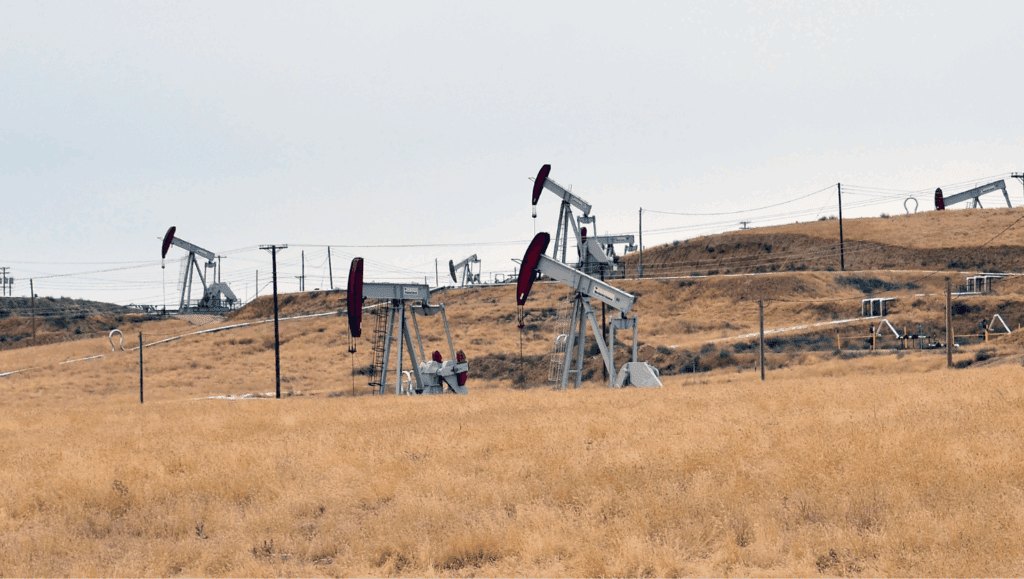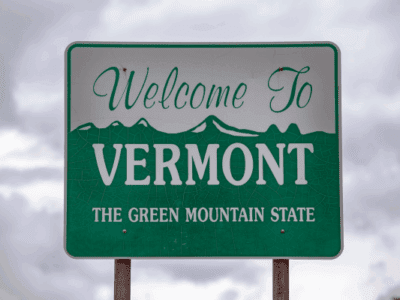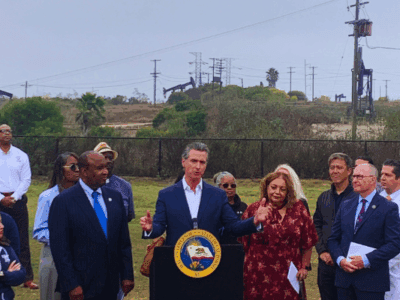What does ‘Drill, Baby, Drill’ Mean in California?
The Drain is a weekly roundup of environmental and climate news from Legal Planet.

A court fight over oil drilling off the coast of Refugio State Beach near Santa Barbara. Proposals to drill around public schools in Ojai and Los Osos. The potential for oil operations directly adjacent to popular national monuments. New risks to our ecosystems that sustain imperiled species like the California condor.
This is what “Drill, Baby, Drill” looks like so far in California and action is coming this week.
Welcome to The Drain, a weekly roundup of environmental and climate news. Subscribe to the newsletter here.
Even if you’ve seen the headlines, heard the talking points, and fielded urgent NGO fundraising appeals for months about how the Trump administration plans to open public lands for oil drilling, it still hits different when it comes for your region.
Now, the Trump administration is reviving plans to expand oil drilling and fracking across more than one million acres of public lands from the San Joaquin Valley up the Central Coast to the San Francisco Bay Area. That includes about 850,000 acres throughout California’s Central Valley and another 284,000 acres around the bucolic Central Coast. (It’s much larger when you factor in the acres of subsurface mineral estate at issue.) The Bureau of Land Management published this notice and this notice in the Federal Register on June 23. For one more week, BLM’s Bakersfield and Central Coast offices respectively are accepting public comments on these two proposals through Wednesday, July 23.
For some context: these revived plans come after a series of lawsuits filed by environmental groups like Earthjustice over the past decade essentially stopped the leasing of California’s federal lands for drilling, as Kurtis Alexander reports for the San Francisco Chronicle.
Los Padres ForestWatch has published this helpful map of the lands threatened under the BLM Bakersfield office proposal — these are landscapes, ecosystems, and rural communities from Cuyama to Carrizo Plain and from the Santa Ynez Valley to the Ojai Valley. There’s a large swath of land near Lompoc that borders on, or even includes, the Vandenberg Space Force Base. (Take a second to picture a SpaceX Falcon 9 rocket launching above an oil field.)
“This is not just about one lease or one well—it’s about opening the door to industrial development across landscapes that have remained wild and unspoiled for generations,” Jeff Kuyper, executive director of Los Padres ForestWatch says. His and several other groups are urging public comment in the remaining week. One columnist at the not-particularly progressive Turlock Journal bemoaned that too few residents in the San Joaquin Valley are aware of what exactly is being proposed by BLM.
Many of these places are gorgeous and sensitive, but the one that gets me is the Cuyama Valley, where my family routinely goes to help harvest grapes and olives at a local vineyard called Condor’s Hope. That valley is an agricultural hot spot and already faces groundwater concerns. The nearby Carrizo Plain National Monument is full of rolling hills perfect for walking through patches of purple, yellow and orange wildflowers without the threat of those gnarly pumpjacks that dot nearby Kern County. And this area just barely escaped the Madre Fire, which chewed through 80,000 acres but thankfully stayed north of Highway 166. For this valley to fend off drought, wildfire, and now oil drilling is fitting but infuriating.

In a somewhat different case along the Santa Barbara coast, environmental groups and state officials have had some early success delaying Sable Offshore Corp., from restarting an offshore pipeline system that infamously ruptured and caused the massive Refugio oil spill in 2015. There too, we’re watching for action this week in one of the early tests of how local communities in California can fend off renewed oil operations in the Trump era.
Sable was fined $18 million by the Coastal Commission in April for repeatedly violating the Coastal Act by repairing the pipelines without all the necessary permits. There’s a hearing in that case next Wednesday, July 23. In a separate case filed by the Environmental Defense Center and other local nonprofits, Sable was hit with a temporary restraining order, as Grace Toohey has reported for the LA Times. “Restarting this defective pipeline with no review and no way for the public to weigh in is a danger to our coast, our climate, and people on the Central Coast,” Linda Krop, Chief Counsel of the Environmental Defense Center, said in a recent news release.
There’s a hearing in that case this Friday, the day the restraining order is set to expire.
Here’s what else to watch for this week…
More California

In Sacramento, it’s a week of energy policy debate in the Capitol including:
- SB 237: a proposal backed by Senate Pro Tem Mike McGuire to overhaul gas regulations, being heard in the Assembly Utilities and Energy Committee.
- Cap and trade: Both chambers hear their representative cap-and-trade reauthorization proposals in the Assembly Natural Resources and Senate Environmental Quality committees (Monique Limón’s SB 840 and Jacqui Irwin’s AB 1207)
- Energy affordability: Assemblymember Cottie Petrie-Norris and Sen. Josh Becker, chairs of each chamber’s energy and utility committee, will hear each other’s energy affordability bills.
Not SB 540 though: Sen. Becker’s bill to create a West-wide energy market got yanked from today’s Assembly Utilities and Energy Committee agenda, Politico reports.
As for cap and trade, California may have lost up to $3 billion in revenue this year due to delays updating the state’s cap-and-trade program, according to a report just released by Clean and Prosperous California. That’s because of the big dip in prices for carbon allowances.
Back to public lands, BLM will also hold a competitive geothermal lease sale on Tuesday, August 26, 2025, offering 13 parcels totaling 23,000 acres across Imperial, Lassen, and Modoc counties.
LAist climate reporter Erin Stone moderated this panel called “Six Months After the Fires: Stories Shared, Lessons Learned” with panelists affected by various fires from 2017 to now.
The recent CEQA changes are not the major transformation you might think, so don’t expect a huge rush of housing… My UCLA Law Jonathan Zasloff wrote at Legal Planet about the limits of the recent CEQA reform and why he thinks zoning codes must also be rethought.
Good News
In China, electric vehicle sales are currently on track to outpace gasoline car sales this year, Bloomberg reports. EVs only accounted for about 30% of sales in China last year so it’s a big jump. That’s good news for China because it will help curb local air pollution and oil imports.
Bad News
In China, electric vehicle sales are currently on track to outpace gasoline car sales this year. That’s bad news for the US, where EV sales are up just 6% and less than a million electric vehicles were sold in all of North America. Today China announced it is moving to put new restrictions on its EV manufacturing technology to keep its leg up.
FEMA, Floods, and Fires
FEMA did not answer nearly two-thirds of calls to its disaster assistance line a whole 2 days after the catastrophic Texas floods, according to documents reviewed by Maxine Joselow at The New York Times. Contractors who handle call centers had been fired. In an interview on NBC’s “Meet the Press,” DHS Sec. Kristi Noem denied that a memo she issued requiring her to approve FEMA expenditures over $100,000 had caused the agency to move more slowly.
Flash floods are among the trickiest climate-fueled disasters to plan for, but one country that has done a better job than most is Japan, the NYT writes.
Turns out that Texas has given up $225 million in federal aid in the last decade that Washington had granted it to ready communities for disasters, according to records reviewed by Thomas Frank and Mike Lee for Climate Wire.
In the wake of the Texas floods, Nick Gerda at LAist explains the flood infrastructure and management systems in place in Southern California, especially the flood risks to the Whittier Narrows Dam above Pico Rivera.
My colleague Cara Horowitz is quoted in a UCLA Newsroom media advisory of expert opinion on the Texas floods. “For decades, Americans have relied on the federal government for help before, during and after disasters strike,” she says. “Now, communities around the U.S. need more support than ever to help forecast and prepare for the growing number of climate-fueled disasters and then, when these tragedies strike, to help recover from them.”
This firsthand account of a family waking up in the middle of the July 4th flash flood and congregating at the kitchen island only to have the house be carried away down the river is a riveting read and a horrifying reminder of the power of rushing water. It’s by Aaron Parsley in Texas Monthly.
And this is not The Onion: Six Republican members of Congress who just voted to slash US climate policies in the tax bill wrote a letter to Canada’s embassy “on behalf of constituents who have had to deal with suffocating Canadian wildfire smoke filling the air to begin the summer,” appealing to Canadian Ambassador Kirsten Hillman to do more to prevent wildfire smoke.
Fallout from the GOP Tax Bill

That tax and spending bill is going to make it much harder for states to reach their environmental goals and clean energy ambitions. That includes California, as covered by LAT, Minnesota, covered here by Minn Post, and even Texas which stands to lose as much as 77 gigawatts of electricity capacity, as covered by the Houston Chronicle.
Columbia’s Center on Global Energy Policy published a blog series, featuring six contributions from CGEP scholars, analyzing the potential impacts of the law across a range of sectors from EVs to carbon capture.
Here’s a cheat sheet on what tax incentives disappear from Canary Media.
Legislation & Litigation
Senator Edward Markey of Massachusetts and Representative Nanette Barragán from California introduced a resolution last week that recognizes climate change as a growing threat to public health and calls for a coordinated federal strategy led by the Department of Health and Human Services to protect communities from extreme heat and other worsening climate-fueled harms.
Today (Wednesday), Senator Jeff Merkley and colleagues will introduce concurrent resolutions in the Senate and the House that “recognize children’s fundamental rights to life and a stable climate system.” Merkley is expected to be joined by youth plaintiffs from Lighthiser v. Trump, a constitutional right to life lawsuit challenging the Trump Administration’s executive actions. The case follows in the footsteps of Juliana v. US.
Montana, Florida, and Louisiana are among the 19 Republican-led states seeking to sign onto the motion filed last week in Montana federal court to intervene as defendants in Lighthiser v. Trump.
Coming up on July 23, the top United Nations court will issue a nonbinding opinion on countries’ legal obligation to fight climate change, a decision expected to be cited in climate change-driven litigation around the world, Reuters reports. It’s expected to address whether the biggest polluting nations should be liable for damages to small island states.
Energy etc.
Tuesday, Trump announced $70 billion in AI-related energy investments during a visit to Pennsylvania. The investments will include new data centers, power generation expansion, and grid infrastructure upgrades. Meta confirmed this week the details of its AI expansion plans, which will require 2 gigawatts of new gas-fired electricity, Heatmap News reports. Google announced $25 B in data centers and AI infrastructure.
Amid the recent 100-degree heat in New England, solar panels and batteries helped keep AC running while reducing costly fossil-fuel generation, Canary Media reports.
Here in California, more than 9 out of 10 days so far this year have been powered by 100% clean energy for at least some part of the day. In 2025, California’s grid ran on 100% clean electricity for an average of 7 hours a day, according to data compiled by the California Energy Commission and put out by the governor’s office. And in 2023, two-thirds of California’s energy (a whopping 67%) came from carbon-free sources.
Oregon lawmakers meanwhile have passed two bills (HB 2065 and HB 2066 ) that experts are calling “first in the nation.” Utility Dive reports that they will make communities more resilient as the state’s grid faces rising electricity demand, more frequent extreme weather events and repeated public safety power shutoffs to mitigate wildfire risk.
A new report from the nonprofit American Council for an Energy-Efficient Economy assesses a handful of new technologies including window unit heat pumps that could help decarbonize large multi-unit residential buildings. As someone who has followed this industry for several years, Heatmap News’ Emily Pontecorvo writes “I was especially wowed by how well the new window heat pumps have performed.”
Pontecorvo also has a definitive look (as definitive as I’ve seen so far) at how much Inflation Reduction Act money the Biden administration actually got out the door before leaving office. That number is about $61.7 billion with Trump’s tax measure clawing back 31.7 billion.
Speaking of heat pumps, they are already beating out traditional gas appliances, but would they be doing even better in the US with a cooler (ahem) and more accurate name? Shannon Osaka explores this for the Washington Post. I like David Ho’s preferred name “Icy Hot Fan Blasters.” And the NYT has a 2-question quiz to help consumers decide whether they should get a heat pump. Although Question 1 is missing a multiple-choice answer that applies to my own home (we have no heating other than a space heater.)
State utility regulators and environmental groups have filed rehearing requests with the Department of Energy pushing back on directives trying to keep dirty power plants on the grid, Jeff St. John reports at Canary Media.
Other items worth your time
The relatively new executive director of the Sierra Club, Ben Jealous, is on leave as of Friday afternoon, the organization confirmed. In a letter from one local executive committee critical of Jealous that was seen by The New York Times, some members criticized his strategic vision, fund-raising efforts, and hiring of a senior staff member who was registered as a lobbyist for the cryptocurrency firm Crypto.com.
Sammy Roth had a fascinating Boiling Point column connecting the dots between ICE raids and environmental justice using the LA Dodgers as the conduit. “Owning up to Chavez Ravine’s sordid history would be a great step. So would getting rid of the 76 ads,” Roth writes. (I wrote about the climate implications of ICE raids back in June here.)
Meanwhile, rather than address their Big Oil greenwashing, the Los Angeles Dodgers Foundation is promoting something called the “Recycling Challenge,” whereby youth baseball players are encouraged to take bottles and cans to a recycling center, get a receipt, and bring it to their coach in order to compete for throwing out the first pitch. This sounds like a pretty decent environmental awareness campaign for the 1980s. Is this really all they can come up with in 2025?
Climate Action Campaign, a coalition of 12 environmental groups, has compiled a long list of actions and events that people can participate in to stay active on climate issues.
California officials are on high alert for golden mussels, a thimble-sized invasive species that could wreak havoc on California’s water system, Rachel Becker reports for CalMatters.
A new art exhibit opened this past week at Descanso Gardens titled “Roots of Cool: A Celebration of Trees and Shade in a Warming World” and it was co-curated by UCLA Luskin’s Edith de Guzman and her artist partner Jolly de Guzman. A write-up in LAT finds the exhibition highlights all-women artists “who provoke visitors to contemplate the pressing issue of shade equity, the unequal access to cooling shade across urban neighborhoods, and what a tree and shade filled future can look like for LA.
Media Industry News

The Senate is moving to vote this week on the Trump administration’s request to claw back federal funding for NPR and PBS. It will devastate small local member stations, like those in Alaska and other rural areas.
News industry executives are starting to freak out about “Google Zero,” a term popularized by The Verge’s Nilay Patel to describe the moment when Google stops sending any referral traffic to third-party sites. A new report from Similarweb finds that since the launch of Google’s AI Overviews in May 2024, the proportion of news-related searches that don’t result in any click-throughs to publisher websites has jumped to nearly 69 per cent from 56 per cent. David Skok, CEO of the Canadian site The Logic, writes about what happens to digital news outlets when readers stop clicking on links.
To battle this “traffic apocalypse,” media outlets are deploying various strategies to maintain a direct connection with readers, including a focus on having their own app, and “squeezing more juice out of newsletter lists,” says Intelligencer.
“The only AI-related business strategy that makes any sense whatsoever is one where media companies and journalists go to great pains to show their audiences that they are human beings, and that the work they are doing is worth supporting because it is human work that is vital to their audiences,” writes Jason Koebler for 404 Media.






Reader Comments